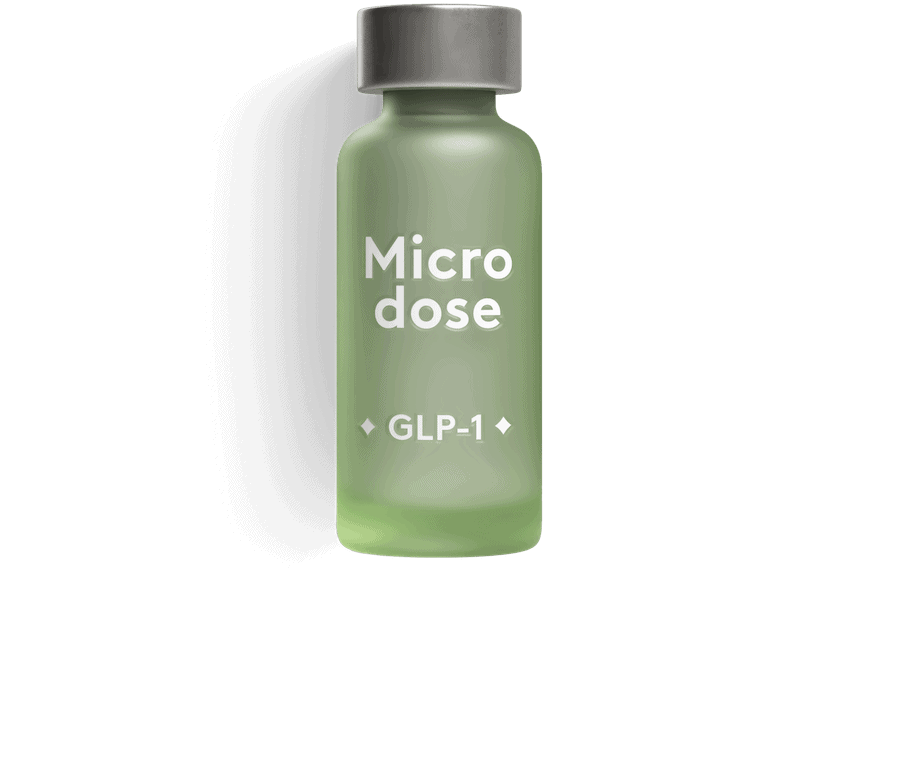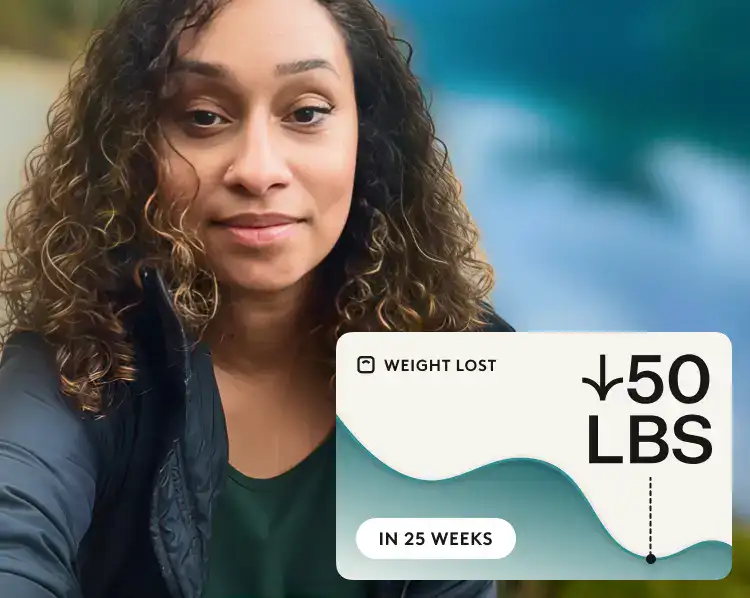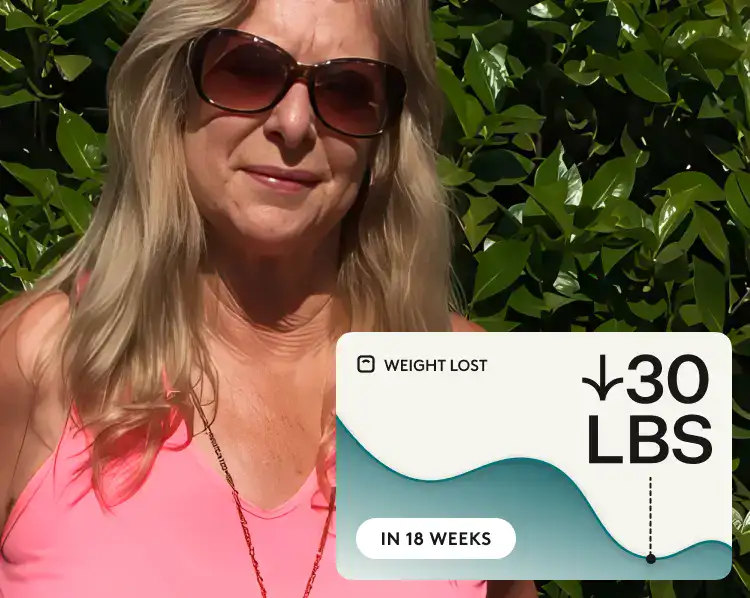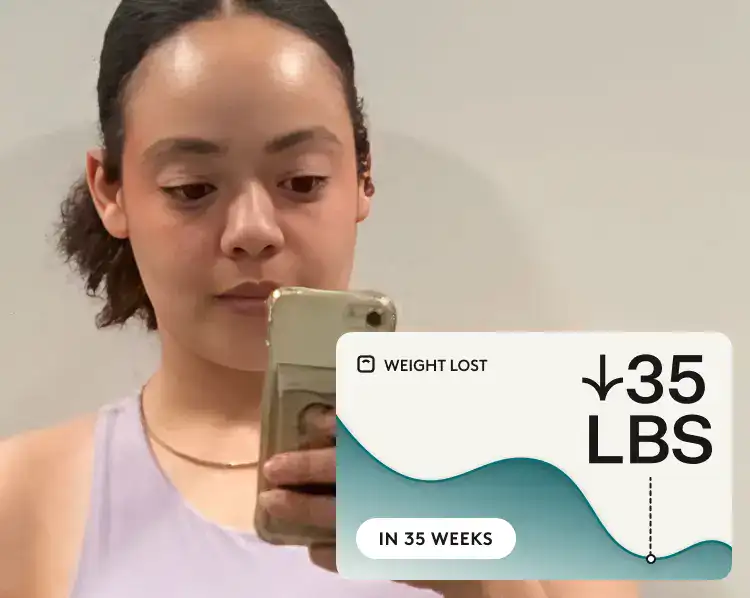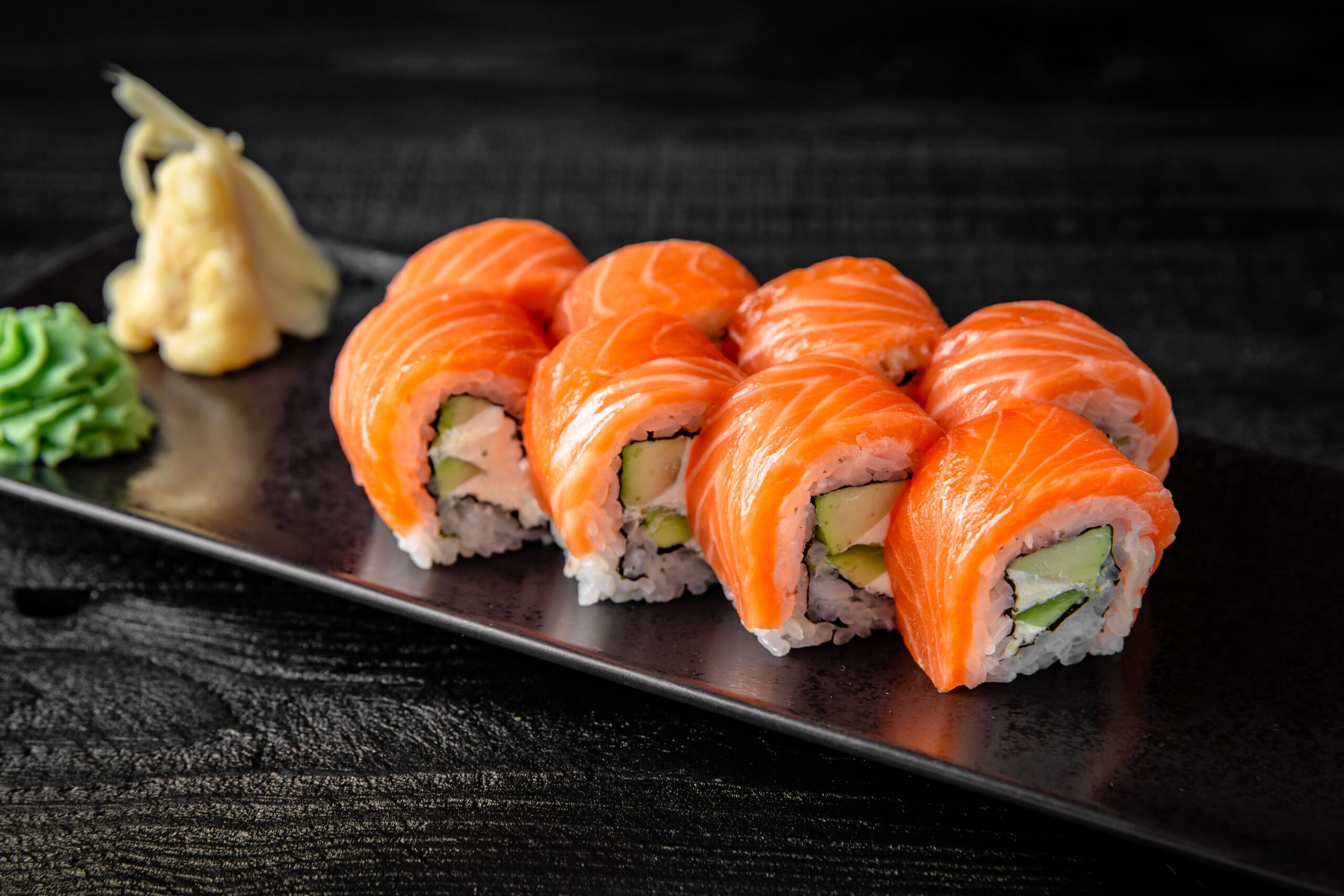Brown rice is often called the “healthier” rice—but what does that really mean when it comes to weight loss and nutrition? This hearty whole grain delivers complex carbohydrates, a bit of fiber to help you stay full, and essential nutrients like magnesium, selenium, and B vitamins that support steady energy, metabolism, and heart health.
We’ll look at how brown rice fits into a calorie deficit, how it impacts blood sugar and digestion, and what the research says about its role in fat loss. You’ll also see how it stacks up against other grains like quinoa and barley, learn portion sizes that align with your goals, and get easy tips for preparing it in the most satisfying, balanced way.
✅ Quick answer
Yes, brown rice can absolutely fit into your weight loss plan. A ½ cup of cooked brown rice has about 110 calories and provides fiber, B vitamins, and slow-digesting carbs that help keep your energy steady. Because it’s satisfying and nutrient-rich, it can help you stay full between meals and make mindful eating easier. Just be mindful of portions—like any food, it’s all about balance
🚀 Weight-loss benefits of brown rice
- Contains fiber for fullness – Brown rice provides about 2 grams of fiber per ½ cup. While it’s not the highest-fiber grain, that bit of fiber—along with its complex carbs—can help slow digestion, support steady energy, and make meals more satisfying.
- It’s got more nutrients than white rice – Unlike white rice, brown rice keeps its bran and germ layers, which provide important nutrients like magnesium, selenium, and manganese. These support energy production and overall wellness, giving your meals more nutritional value for the calories.
- It’s digested more slowly than white rice – As a complex carbohydrate, brown rice is digested slowly, offering a steady release of energy. That helps fuel your day (and your workouts) without the quick crash that comes from simple carbs, supporting consistency in your healthy habits.
⚠️ Things to be mindful of:
- Portion size matters – Brown rice is nutritious, but it’s also relatively calorie- and carb-dense compared to non-starchy veggies. A generous serving can add up quickly. Keeping portions around ½ cup cooked helps you get the benefits without going over your calorie goals.
- Naturally contains arsenic – Like all rice, brown rice can absorb small amounts of arsenic from the soil and water where it’s grown. Because the outer layer remains intact, it tends to hold a bit more than white rice. Eating it in moderation, rinsing it before cooking, and rotating your grains (like quinoa or barley) are simple ways to reduce exposure.
- May cause mild bloating – If you’re not used to much fiber, adding brown rice too quickly might lead to gas or bloating. Easing it in gradually and drinking enough water can help your digestion adjust comfortably.
Rx weight loss, the right way, with Noom
Get access to prescription weight loss medication with Noom.🥗 Nutrients in brown rice (per 1/2 cup cooked)
| Nutrient | Amount | % RDA* |
|---|---|---|
| Calories | 123 calories | 6% |
| Protein | 2.7 g | 5% |
| Total carbs | 25.6 g | 9% |
| Fiber | 1.6 g | 6% |
| Sugars | 0.2 g | — |
| Total fat | 1.0 g | 1% |
| – Saturated fat | 0.3 g | 1% |
| – Monounsaturated fat | 0.4 g | — |
| – Polyunsaturated fat | 0.4 g | — |
| Omega-3 | — | — |
| Omega-6 | 0.3 g | — |
A ½-cup serving of cooked brown rice provides about 123 calories, making it easy to fit into most calorie goals. Most of those calories come from complex carbohydrates that digest slowly—helping you stay energized and avoid those mid-afternoon energy dips.
While it’s not a high-protein food, it does offer about 3 grams of protein and nearly 2 grams of fiber, a bit more than white rice. That combination supports steady fullness and balanced blood sugar. Brown rice is also naturally low in fat, making it a great base to pair with lean proteins, vegetables, and healthy fats for a balanced meal.
*Recommended dietary allowance (RDA) is defined as the average daily amount of nutrients needed to meet the requirements of nearly all healthy people in a specific group.
💊 Vitamins & minerals in brown rice (per 1/2 cup cooked)
| Vitamin/Mineral | Amount | % RDA* |
|---|---|---|
| Manganese | 0.97 mg | 42% |
| Niacin (B3) | 2.56 mg | 16% |
| Thiamin (B1) | 0.18 mg | 15% |
| Selenium | 5.8 μg | 11% |
| Copper | 0.10 mg | 11% |
| Magnesium | 39 mg | 9% |
| Pantothenic acid (B5) | 0.38 mg | 8% |
| Phosphorus | 103 mg | 8% |
| Vitamin B6 | 0.12 mg | 7% |
| Zinc | 0.71 mg | 6% |
| Iron | 0.56 mg | 3% |
| Potassium | 86 mg | 2% |
Brown rice offers more than complex carbs—it’s a solid source of essential minerals and B vitamins that are often lost when rice is refined. Its standout nutrient is manganese, providing about 40% of your daily needs in just half a cup. Manganese helps your body produce energy, build strong bones, and protect cells from oxidative stress.
It also contains B vitamins like niacin (B3) and thiamin (B1), which play key roles in turning food into energy and supporting your nervous system. You’ll also get small but meaningful amounts of selenium, magnesium, and phosphorus, all of which support thyroid health, muscle function, and bone strength.
🔍 Nutrient breakdown
Glycemic index (GI) of brown rice
Glycemic index: 68 (Moderate)
💡 Tip: Pairing brown rice with a lean protein like chicken or a source of healthy fat like avocado can help lower the overall glycemic impact of your meal, further stabilizing blood sugar levels.
Is brown rice high in protein?
❌ No – Brown rice contains 2.7 g of protein per 1/2 cup serving. While it contributes to your daily protein intake, it is not considered a primary protein source. To build a complete meal, it’s essential to pair it with more substantial protein sources.
🔹 Better protein alternatives: Quinoa | Lentils | Chicken breast
Is brown rice high in fiber?
✔️ No – A ½ cup serving of cooked brown rice provides about 1.6 grams of fiber, which is more than white rice but less than many other whole grains like quinoa or barley. That bit of fiber can still support healthy digestion, steady energy, and a greater feeling of fullness after meals.
💡 Tip: Pair brown rice with other fiber-rich foods—like veggies, beans, or lentils—and drink plenty of water to help your digestive system stay regular and comfortable.
Is brown rice low in carbs?
❌ No – Brown rice has 25.6 g of carbs per 1/2 cup serving. As a grain, its primary role is to provide carbohydrates for energy. However, these are complex carbohydrates that release energy slowly, making them a quality choice for sustained fuel.
💡 Tip: Practice portion control by using a measuring cup to serve your rice, ensuring your carb intake aligns with your weight loss goals.
Is brown rice gluten-free?
✔️ Yes – Brown rice is a naturally gluten-free grain. This makes it a safe and excellent carbohydrate option for individuals with celiac disease or non-celiac gluten sensitivity. Always check packaging for potential cross-contamination if you have a severe allergy.
Is brown rice good for fat loss?
✔️ Yes – When portioned mindfully, brown rice can support fat loss. With about 110 to 120 calories per ½ cup and a bit of fiber to help you feel full, it can fit easily into a calorie-controlled plan. The complex carbs in brown rice provide steady energy for workouts and daily movement, which supports an active metabolism without the crash you might get from refined grains.
💡 Tip: Pair brown rice with lean proteins, colorful veggies, and flavor boosters like herbs or a sprinkle of chili flakes to make meals more satisfying without adding excess calories.
🍽️ Diet compatibility: Which diets include brown rice?
| Diet | ✅Yes / ❌No | Why |
|---|---|---|
| Keto | ❌ | Brown rice is too high in carbs to fit into keto. With about 26 grams per ½ cup, it would take up most of a day’s carb limit, which is usually under 50 grams. |
| Paleo | ❌ | The Paleo diet avoids all grains, including rice. Since it’s based on foods eaten before agriculture, brown rice doesn’t make the cut. |
| Mediterranean | ✅ | Brown rice fits right in with the Mediterranean approach, which emphasizes whole grains, vegetables, lean proteins, and healthy fats. It makes a great base for balanced, colorful meals. |
| Vegan | ✅ | 100% plant-based, brown rice is a staple for many vegans. It provides energy, key minerals, and a bit of protein—perfect for pairing with beans or tofu. |
| Gluten-free | ✅ | Naturally gluten-free, brown rice is safe for people with celiac disease or gluten sensitivities and works well as a go-to grain. |
Brown rice is a versatile food that complements many balanced eating styles. It shines in Mediterranean, vegan, and gluten-free diets, offering a nutritious source of steady energy and fiber.
That said, it doesn’t fit every plan—particularly keto or Paleo, where grains are limited or excluded. Knowing where it fits helps you choose the eating style that supports both your preferences and your goals.
🌟 Is brown rice healthy? What are the health benefits
Metabolic health: Is brown rice good for your metabolism?
Boosts metabolism? ❌ No – Brown rice doesn’t “speed up” your metabolism, but it supports it in steady, sustainable ways. The B vitamins in brown rice help your body turn food into energy, and its complex carbs provide a slow, consistent fuel source that keeps you moving throughout the day.
Improves insulin sensitivity? ✔️ Yes – Thanks to its fiber and magnesium, brown rice can help regulate blood sugar and improve how your body responds to insulin. Studies show that swapping white rice for brown rice is linked to a lower risk of type 2 diabetes, making it a smart long-term choice for metabolic health.
Effect on fat storage? Neutral – Eaten in the right portions, brown rice provides energy your body can use—not store. Its slow-digesting nature helps prevent sharp blood sugar spikes that can trigger fat storage. Like any food, though, too much of it can tip you into a calorie surplus.
Cholesterol impact: Does brown rice affect cholesterol levels?
Does it lower LDL (bad) cholesterol? ✔️ Yes – The soluble fiber in brown rice’s bran layer can help lower LDL (“bad”) cholesterol by binding to it in the digestive system and reducing how much is absorbed into the bloodstream. Over time, that can contribute to better heart health.
Does it raise HDL (good) cholesterol? Limited data – Some studies on whole grains show small improvements in HDL (“good”) cholesterol, but there isn’t strong evidence that brown rice alone has this effect. The real benefits come from eating it as part of an overall healthy lifestyle.
Overall impact on heart health? Brown rice can support heart health by helping lower LDL, providing magnesium to regulate blood pressure, and offering anti-inflammatory benefits when eaten as part of a balanced diet.
💡 Tip: Try cooking brown rice with a drizzle of olive oil and topping it with nuts or seeds to add more heart-healthy fats and flavor.
Can I eat brown rice for a calorie deficit?
✔️ Yes, with awareness – Brown rice can absolutely fit into a calorie deficit when portions are kept in check. A ½ cup serving has about 120 calories and a bit of fiber to help you feel satisfied on fewer calories. That steady fullness makes it easier to stay on track and maintain your deficit without feeling deprived.
💡 Tip: Pair brown rice with lean protein and high-fiber veggies to create a more filling, balanced meal that keeps hunger in check longer.
Is brown rice rich in antioxidants?
✔️ Yes – Brown rice contains several antioxidants, including phenolic compounds and flavonoids, primarily located in the bran and germ. These compounds help combat oxidative stress in the body, which is linked to chronic diseases and aging. This antioxidant activity is another key benefit lost when rice is refined into white rice.
Does brown rice support gut health?
✔️ Yes – The fiber in brown rice acts as a prebiotic, which means it feeds the beneficial bacteria in your gut. A healthy gut microbiome is linked to improved immunity, better mood, and overall health. This makes brown rice a great food for nurturing your internal ecosystem.
Does brown rice support digestion?
✔️ Yes — it can help keep things moving. The fiber in brown rice adds gentle bulk to your stool, which can support regular bowel movements and overall digestive comfort. It’s not the highest-fiber food out there, but it can still play a helpful role when part of a balanced diet that includes plenty of vegetables, fruits, and water.
Does brown rice help you feel satiated and less hungry?
High satiety – The combination of fiber and complex carbohydrates in brown rice slows down digestion. This leads to a gradual rise in blood sugar and a prolonged feeling of fullness compared to refined grains.
Satiety level: High
💡 Tip: Pair brown rice with plenty of non-starchy veggies to add volume and color to your plate. You’ll boost fullness, get more nutrients, and keep calories in check—all while making your meal more satisfying.
Does brown rice help with nighttime cravings?
✔️ Yes – By promoting stable blood sugar levels throughout the evening, a sensible portion of brown rice with dinner can help prevent late-night crashes. These crashes often trigger cravings for sugary or high-fat snacks.
💡 Tip: Pair your evening brown rice with lean protein and vegetables to create a balanced meal that keeps you satisfied until morning.
Does brown rice help reduce inflammation?
✔️ Yes – The antioxidants and fiber in brown rice can contribute to a reduction in chronic inflammation markers in the body. This is a key benefit for long-term health and disease prevention.
Is brown rice beneficial for brain health?
✔️ Yes – The B vitamins and magnesium in brown rice are crucial for healthy brain function. Manganese also plays a role in protecting the brain from oxidative stress. These nutrients support cognitive performance and may help maintain brain health as you age.
Can brown rice improve skin and hair health?
✔️ Yes, minor benefits – The selenium and B vitamins found in brown rice contribute to healthy skin and hair. Selenium is an antioxidant that helps maintain skin elasticity, while B vitamins are essential for cell regeneration. While not a miracle beauty food, it can be part of a diet that supports healthy skin and hair.
Can brown rice help balance hormones?
✔️ Yes, limited evidence – Maintaining stable blood sugar is fundamental for hormonal balance, particularly for insulin and cortisol. The slow-release energy from brown rice helps prevent the sharp fluctuations that can disrupt these systems. More research is needed on brown rice’s direct impact on hormonal health.
💡 Tip: Hormonal balance is complex and influenced by many factors, including stress, sleep, and overall diet quality. Brown rice can be one supportive element in a broader healthy lifestyle approach.
🍽️ Best ways to eat brown rice for weight loss
- Practice portion awareness – Measuring your serving helps you stay mindful. Aim for about ½ to 1 cup cooked, depending on your goals. That way, you’ll enjoy the benefits of brown rice—steady energy and fullness—without overshooting your calorie needs.
- Pair it with protein and veggies – Think of brown rice as the base, not the star of your plate. Fill half your plate with non-starchy vegetables (like broccoli, spinach, or bell peppers) and a quarter with lean protein (like grilled chicken, fish, or beans). This mix adds fiber, volume, and flavor to keep you satisfied.
- Keep it simple – Skip fried or creamy versions that add extra oil, butter, or sodium. Stick to steamed, boiled, or lightly sautéed rice for the best balance of taste and nutrition. A squeeze of lemon, a drizzle of olive oil, or fresh herbs can add flavor without the extra calories.
🍏 Best alternatives & comparisons (per 1/2 cup cooked)
| Food | Calories | Carbs | Fiber | Protein | Fat |
|---|---|---|---|---|---|
| Brown rice | 123 calories | 25.6 g | 1.6 g | 2.7 g | 1.0 g |
| White rice | 130 calories | 28.2 g | 0.4 g | 2.7 g | 0.3 g |
| Quinoa | 120 calories | 21.3 g | 2.8 g | 4.4 g | 1.9 g |
| Cauliflower rice | 23 calories | 4.1 g | 2.3 g | 1.8 g | 0.5 g |
| Wild rice | 101 calories | 21.3 g | 1.8 g | 4.0 g | 0.3 g |
| Barley (pearled) | 123 calories | 28.2 g | 3.8 g | 2.3 g | 0.4 g |
When it comes to healthy carb choices, brown rice holds its own as a balanced, moderate-calorie option. It’s more nutrient-dense than white rice, offering extra fiber and minerals, but it’s not the top performer for protein or fiber.
If you’re looking to boost fiber and protein, quinoa is a great pick—it offers nearly double the amount of both for about the same calories. Barley is another standout, packing in the most fiber of the bunch to help keep you full longer.
If your goal is to cut calories or carbs, cauliflower rice is the clear winner. It mimics the texture of grains with a fraction of the calories, making it a smart choice for lower-carb or keto-style eating.
Ultimately, the best option depends on your goals—whether that’s staying fuller for longer, building more protein into meals, or lightening up your plate.
Frequently asked questions about brown rice for weight loss
Can I eat brown rice every day for weight loss?
Yes, you can enjoy brown rice daily as part of a weight loss plan—just keep portions in check. Aim for ½ to 1 cup cooked per meal, paired with plenty of vegetables and lean protein. Rotating in other whole grains can also help you get a broader range of nutrients and lower your overall arsenic exposure.
Is brown rice better than white rice for losing weight?
Yes, brown rice is generally the better choice. It has more fiber, which helps you stay full longer and supports steadier blood sugar levels. Plus, the extra nutrients in brown rice give your metabolism and overall health a little boost during your weight loss journey.
Should I eat brown rice before or after a workout?
Either can work—it depends on your needs. Eating brown rice before a workout provides steady energy for longer training sessions, while having it after helps replenish glycogen stores and supports recovery. Listen to your body and see what timing feels best for you.
How much brown rice should I eat per day to lose weight?
Most people can include ½ to 1 cup of cooked brown rice once or twice a day while losing weight. The right amount depends on your calorie needs, activity level, and how many carbs fit into your plan. Measuring portions and adjusting as you go will help you stay on track.
Does brown rice make you gain weight?
No single food causes weight gain—eating more calories than you burn does. In fact, when eaten in reasonable portions, brown rice can support weight loss because its fiber helps manage hunger. The key is balance and mindful preparation (think steamed or boiled, not fried).
Can I eat brown rice at night and still lose weight?
Yes, you can eat brown rice at night and still meet your goals as long as you stay within your daily calorie target. Its complex carbs can even help keep blood sugar stable overnight and reduce late-night cravings. What matters most is total intake over time, not the exact timing of your meals.
Is brown rice inflammatory?
For most people, no. Brown rice contains antioxidants and fiber that may actually help reduce inflammation. Unless you have a specific sensitivity or allergy, brown rice is generally considered an anti-inflammatory food that supports overall health.
🧠 The bottom line: Brown rice is a smart choice for weight loss
Brown rice supports healthy, sustainable weight loss by offering steady energy, satisfying fiber, and key nutrients that help you stay full and avoid energy crashes. Its slow-digesting carbohydrates keep blood sugar stable and reduce hunger, making it easier to stick with a calorie deficit over time.
When you measure your portions (about ½ to 1 cup cooked) and build your meals around balance—with lean protein, non-starchy veggies, and healthy fats—brown rice becomes a steady, satisfying part of your plan. It helps you feel nourished, not restricted, while supporting overall health.
Because it retains its bran and germ layers, brown rice delivers vitamins, minerals, and antioxidants that benefit digestion, metabolism, and heart health. Including it regularly can help you manage your weight and improve your overall well-being—one balanced meal at a time.
📖 Scientific evidence
- Whole grains like brown rice may help lower the risk of type 2 diabetes (Archives of Internal Medicine, 2010). In this large observational study, replacing white rice with brown rice or other whole grains was linked to a lower risk of developing type 2 diabetes.
- Whole-grain diets, including brown rice, may help lower blood pressure (Nutrition Research, 2003). In this study, men with moderately elevated cholesterol who ate a diet rich in whole grains (barley, whole wheat, and brown rice) experienced reductions in blood pressure.
- Brown rice can contain slightly more arsenic than white rice (Comprehensive Reviews in Food Science and Food Safety, 2025). This study shows that because brown rice keeps its outer bran layer, it can hold onto more inorganic arsenic from the soil and water where it’s grown. The levels are still considered safe in moderation.
- Swapping white rice for brown rice may support better metabolic health (PeerJ, 2021) — In a review of clinical trials, people with prediabetes or type 2 diabetes who ate brown rice instead of white rice saw small but meaningful improvements—like modest weight loss and higher HDL (“good”) cholesterol.
Why you can trust us
At Noom, we’re committed to providing health information that’s grounded in reliable science and expert review. Our content is created with the support of qualified professionals and based on well-established research from trusted medical and scientific organizations. Learn more about the experts behind our content on our Health Expert Team page.


